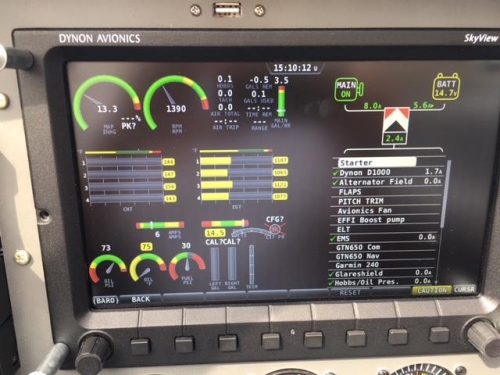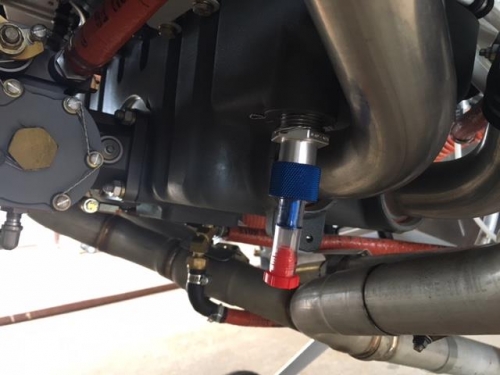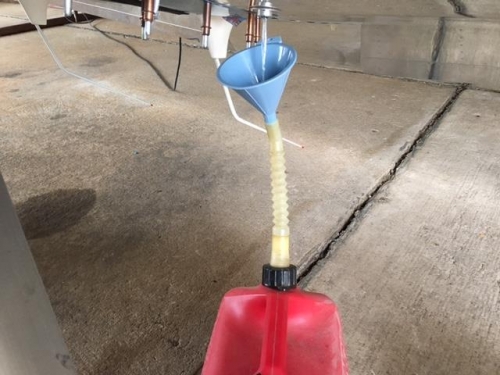
|

|
|

|
Steve & Nancy Riffe

|
Date: 4-10-2017
|
Number of Hours: 2.00
|
Manual Reference:
|
Brief Description: Engine run 3
|

|
In an attempt to isolate the several small oil dots on the firewall, I plugged up the bottom of the oil quick drain—will check after I run the engine again. Dynon’s install documents say if the amp reading you observe seems backwards (mine was showing negative amps) to swap the wires that go to the shunt. So, I swapped the wires, then moved the plane out of the hangar and fired it up. Sure enough, amps indicates like it should. With a VP-X, you can open a menu on the Dynon screen that shows amp flow and a breakdown of the device drawing the amps. I turned on the landing, taxi and nav lights and the amp draw increased—just as it should. The battery voltage before engine start indicates 12.5 volts, but after start it shows 14.7—seems too high to me, but maybe a 2 or 3 minute run at low RPM may not be long enough to charge 100%. Or, it may possibly be a defective voltage regulator in the alternator. Dunno—more research is needed—ack! After the engine run, I pushed the plane back into the hangar and drained the fuel from the left tank in preparation to weigh the bird. The first 2 engine runs were done on the right tank—for this run I used the left tank to ensure that both tanks feed the beast. Also, I did not find any drips from the oil quick drain.
|

|

Screen shot with engine running
|

|

Temp plug to isolate oil dots
|

|

Draining fuel from left tank
|

|
|

|

|

|
|

|

|
Copyright © 2001-2025 Matronics. All Rights Reserved.
|

